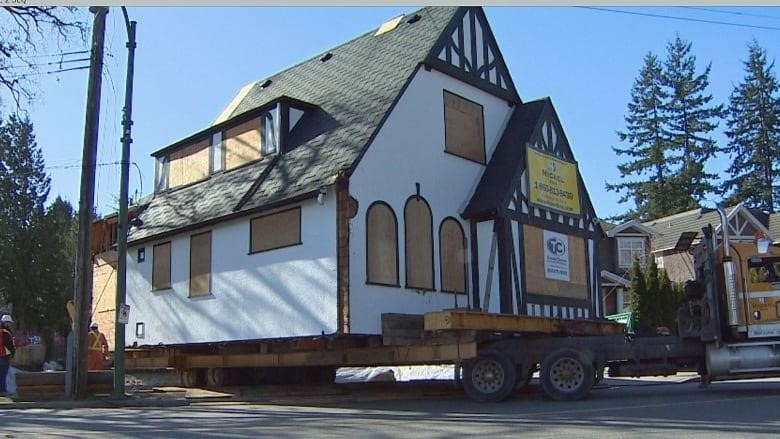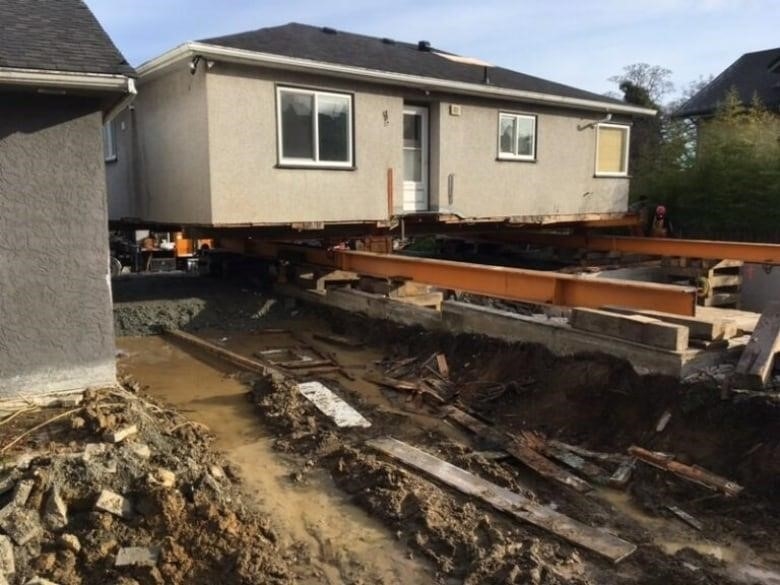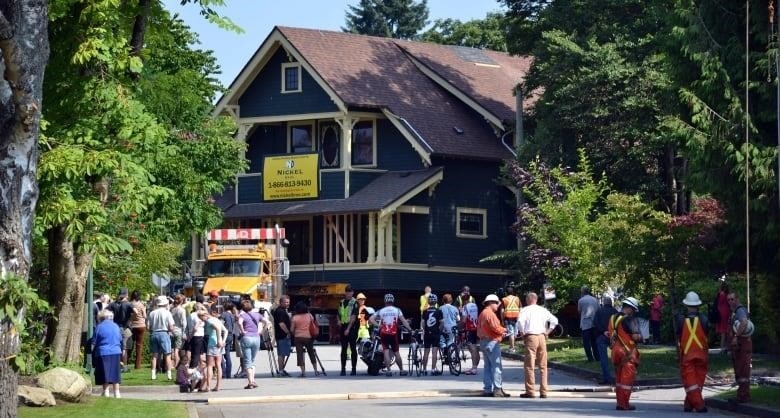
Metro Vancouver says that construction and demolition waste makes up a third of all garbage in landfills
Advocates of lifting and moving homes to a new location instead of tearing them down want governments to make the process of moving homes easier to help meet waste-diversion goals and provide affordable housing in underserved areas.
“We just need the cities to connect the dots, get rid of the red tape, and speed up… permits,” said Jeremy Nickel, president and CEO of Nickel Bros., a family-owned business that has been moving homes since the mid-1950s.
Given the history of a company like Nickel Bros., saving homes from being torn down because of new construction is not a new idea.
The company is one of a few in British Columbia that moves dozens of homes every year. Nickel and others say that now is the time to move more homes because home prices are at record highs and demolition waste is filling up landfills.
In a report called 2020, Metro Vancouver mentioned that moving homes could be a good way to cut down on waste from the demolition and construction industries. A third of all the trash in places like Metro Vancouver’s landfills comes from the sector.

A house move on Vancouver Island earlier this year is used as an example by those who support the idea.
TLA: Two single-family homes in Esquimalt, B.C., could have been torn down to make room for a five-story, 46-unit condo building. Instead, the homes with wood frames were given to the Songhees First Nation and moved there.
Songhees First Nation Chief Ron Sam said that the project gave his community housing and helped meet regional goals for reducing waste.
Sam said at the time, “We look forward to more chances to work with developers like TLA to keep good homes out of the trash and give families safe, secure, and long-term housing.”
Advocates say that such relocation projects could happen more often if cities made the process easier.
Lighthouse, an organization that studies green building initiatives, recently did a study on home relocation in British Columbia to find out what was stopping more homes from being moved and used somewhere else instead of being torn down.
According to the study, about 3,000 homes were torn down in the Metro Vancouver area last year. 600 of them, or 20%, could have been moved elsewhere.
The report said that moving a house costs between $100 and $125 per square foot, while building a new one can cost up to $450 per square foot.
Call to remove obstacles to movin
The Lighthouse report says that some of the things that make it hard to move are “lack of industry awareness, unsupportive permitting schemes, tight timelines, and a misalignment of incentives.”
It wants more cities and towns to require that homes be automatically evaluated for possible relocation, to give more time for relocation before demolition, and to make developers pay deposits that will be returned if relocations happen.
Homes that can’t be moved should be looked at for deconstruction so that building materials can be saved.
Gill Yaron from Lighthouse said, “One of the problems we face is that the demolition industry moves very quickly.”
“When you buy land, you want to clean it up quickly so you can start building. So time is of the essence.”
Joseph Dahmen is a professor of architecture at the University of British Columbia. In 2017, he made a tool that predicted that a rise in property values could cause 25% of homes in Vancouver to be torn down by 2030.
He is glad that business wants to make it easier for people to move to B.C.
Dahmen said, “They are pointing out that policy needs to catch up with ability and capacity.”
Municipal respons
Local leaders say they are open to changes that would help people keep their homes when they move.
In the Burquitlam neighborhood of the City of Coquitlam, 600 homes were built in the 1960s. The value of the land has grown faster than the value of the homes because of the growth of public transportation in the area and the desire to build multi-unit dwellings.
Craig Hodge, a Coquitlam city councillor, says that his council is working to move those homes instead of tearing them down. Next month, Nickel Bros. is already planning to move a few of them.
Hodge said, “We just have to get rid of this idea that we’re going to smash and move houses.” “That shouldn’t be the first choice when we think about redevelopment. It should be the last choice.”

Hodge, who is on a regional zero waste committee and chairs the National Zero Waste Council, had a home on his Vancouver Island property moved to the back of the site instead of tearing it down to make room for a new building.
He wants to rent out the moved house, which was moved with the furniture still inside.
He said, “It showed me that it could be done.”
“We saved the house and turned it into rental property… in a town where there aren’t enough rentals, which is almost every town in British Columbia.”
Hodge says that Coquitlam’s engineering and planning departments are working together to come up with more friendly rules for moving houses.
For example, allowing multiple phases of demolition permits so that houses can be moved before the final demolition permit is issued.
Hodge and others said the province also has a role to play in potentially amending B.C.’s building code to allow older homes to be shifted more easily to new foundations at new locations.
